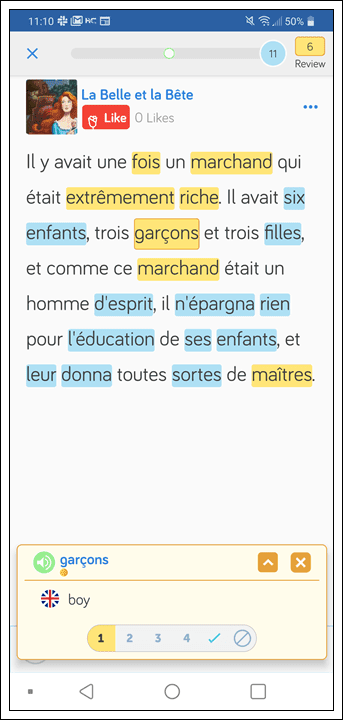French Speaking Countries and the Language Differences
French is one of the most widely taught and spoken languages on earth.
There are officially 21 French speaking countries across the globe, the mother tongue of 77 million people, and the second language of another 202 million, French isn’t spoken uniformly around the world.
In this post, we’ll take a fresh look at French dialects around the world, their differences and how they’ve come to be what they are today.
An Overview of French Dialects
If you want to make it as simple as possible, we could say that there are around 21 varieties of French across the globe.
Africa

In 2007, it was estimated that around 115 million people, across 31 African countries spoke French.
It’s a commonly used but unofficial language across the continent, but especially in the Northwestern region, with a concentration of francophones in Tunisia, Algeria, Mauritania, Morocco, and Congo. It’s also widely spoken by the Creoles of the Indian Ocean.
Africa has the highest number of French speakers of any continent. The language arrived there through French colonialism: It’s no wonder that the countries where the language is most widely spoken used to be French colonies.
As French has interacted with local languages, new variations have emerged. But, basically, the most distinctive traits we can find across African variations of French are:
– The presence of loanwords from native languages
– An “outdated” pronunciation of the letter R, what’s called an “alveolar trill”
Asia

In Asia French is spoken in the ex-colonies of Cambodia, India, Lao, and Vietnam.
After Lao gained independence, the number of Francophones severely decreased. Currently, the country is going through a revival, with younger generations learning the language of their grandparents.
Vietnam has the highest concentration of Francophones on the continent, with a 5% proficiency rate in the general population.
In colonial Vietnam, native servants working at French households used to learn a pidgin version of French, a grammatically simplified variety with the sole purpose of easing everyday communication.
In the portion of India that used to be under French rule, the language is mixed with Tamil, Telegu, and Mayalam, originating three dialects varieties.
North America & The Caribbean

In North America, the highest concentration of Francophones is, of course, in Canada. The two main languages spoken there are Canadian English and Canadian French.
But “Canadian French” is just a general term that could be broken into five dialects: Acadian, Chiac, Newfoundland, Quebecoise and Ontarian French.
Canadian dialects of French tend to incorporate anglicisms, as well as terms from the languages spoken by First Nations people.
For instance, “les sandales” (the sandals) become “les babiches” in Canadian French, “babiches” being an Aboriginal loanword.
Canadian varieties of French differ from their European counterparts slightly, in pronoun use, a higher tendency to address others informally, and an English-inspired tendency to shorten prepositions.
French is also spoken in the Caribbean country of Haiti. Haitian French is mutually understandable with most other dialects, the only obvious difference is its Creole-influenced accent and phonology.
Europe

In Europe, French is spoken in France (as one would expect), in the Italian Aosta Valley, in Belgium, in the Bailiwick of Jersey (a British dependency near Normandy), and in Switzerland.
The French spoken in the Aosta Valley was influenced by Swiss French, Piedmontese and Italian.
Belgian French is most strongly characterized by a strong differentiation of short and long vowels, a pronunciation lacking the labialized palatal approximant, as well as the presence of “Belgicisms”. Belgicisms are words or deformations characteristic of the Belgian variety of the French language. Some are archaic terms, some were created by the Belgian government (for instance, to combat linguistic sexism), and some are the consequence of living in a multilingual country, and being in constant contact with the German language. The presence of archaisms is also a defining trait of Jersey French.
The differences between the French spoken in Switzerland and that spoken in Paris are subtle and mostly lexical. Local varieties of French are always influenced by nearby linguistic uses, as well as the area’s political, cultural, and commercial history. But, if you’re a French student and would like to practice “the purest version of the language” if there is such a thing – I’d recommend visiting the South of France, where the most genuine, less polluted version of the language is spoken.
Of course, you’re in for a quiet vacation. But, if you enjoy long walks on the beach and Medieval history, you’ll be glad to go.
French: The Language of the Future
Two years ago, Natixis, an investment bank published a controversial study designating French the language of the future. According to the study, the language will be more widely spoken than fast-growing Spanish, numerous Mandarin Chinese and our lingua franca, English.
While this methodologically questionable study might be missing the mark, more reasonable estimates suggest that by 2050, French will be spoken by approximately 750 million people worldwide, and it’ll be one of the most relevant languages for business and trade. While, as we’ve seen above, French is spoken in developed, high-GDP nations, the newfound relevance of French will come thanks to Africa.
The African continent is projected to unleash its productive potential in the next few decades. So, we in the non-Francophone world can expect the already high request for French lessons and interpreting services to continue on the rise.
Learn French Faster Using LingQ
Immersing yourself in French doesn’t require you to travel abroad or sign up for an expensive language program.
However, it can be a bit tiresome to find interesting content, go back and forth between sites, use different dictionaries to look up words, and so on.
That’s why there’s LingQ, the best way to learn French online because it lets you learn from content you enjoy!

You can import videos, podcasts, and much more and turn them into interactive lessons.
Keep all your favourite French content stored in one place, easily look up new words, save vocabulary, and review. Check out our guide to importing content into LingQ for more information.
LingQ is available for desktop as well as Android and iOS. Gain access to thousands of hours of audio and transcripts and begin your journey to fluency today.
Thinking of learning French? Check out polyglot and LingQ cofounder Steve Kaufmann’s post on why you should learn French!
***
Sean Patrick Hopwood is a language polyglot and the President of Day Translations, a global translation company.


